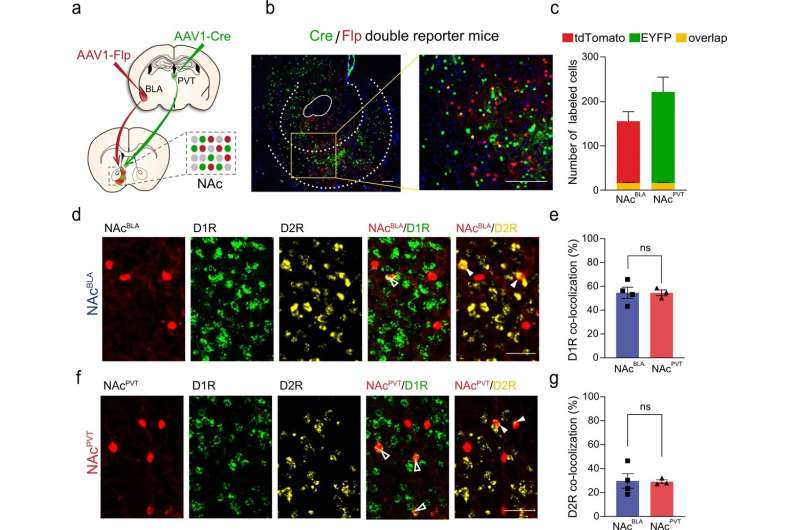How the nucleus accumbens mediates positive and negative motivational valence

Reward-seeking and threat avoidance are critical for survival. Pursuing enjoyable things triggers the release of dopamine in the brain, making people feel pleasure. In contrast, people subconsciously avoid unpleasant feelings such as hunger, nausea and pain in order to avoid risk and greatly reduce the possibility of harm.
Previous studies have proved that the nucleus accumbens (NAc) area of the brain plays an important role in regulating drug reward, feeding, social interaction, pain and instrumental learning.
Recently, a research group led by Prof. Zhu Yingjie from the Shenzhen Institute of Advanced Technology (SIAT) of the Chinese Academy of Sciences (CAS) has revealed the mechanism of NAc in mediating positive and negative motivational valence.
The study was published in Nature Communications.
The researchers designed a series of experiments to elucidate this mechanism. They found two neuron subgroups in the NAc: NAcBLA (BLA, basolateral amygdala) neurons and NAcPVT (PVT, paraventricular thalamic) neurons.
NAcBLA neurons receive BLA inputs and project to VTAGABA (VTA, ventral tegmental area) neurons and LHGlu (LH, lateral hypothalamus) neurons to control reward-seeking behavior. NAcPVT input neurons receive PVT inputs, and project to LHGABA neurons to promote aversion. These results provide an input-output connectivity framework for understanding the role of the NAc subcircuits in mediating reward and aversion.
“Our findings solved a long-standing puzzle of why distinct glutamatergic inputs to the NAc produce opposite motivational valence and highlight the importance of input-output connectivity when dissecting NAc circuitry,” said Prof. Zhu.
The traditional view is that the NAc is the reward center of the brain and the input from other brain regions to the NAc carries reward information. “This work raises an important question, which is why activating the input from the PVT and activating the input from other brain regions to the NAc produce completely different behaviors,” commented Prof. Chen Xiaoke from Stanford University.
“The results of this work provide the neural circuitry basis for BLA-NAc and PVT-NAc glutamate projection in the regulation of reward and aversion behavior, highlighting the importance of different inputs to NAc neurons and the subsets of these neurons in the limbic system in dopamine,” said Prof. Liu Xing from Fudan University.
More information:
Kuikui Zhou et al, Reward and aversion processing by input-defined parallel nucleus accumbens circuits in mice, Nature Communications (2022). DOI: 10.1038/s41467-022-33843-3
Journal information:
Nature Communications
Source: Read Full Article
